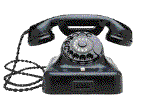|
FREE STUFF...
Directory Listing
FOR SALE...
GET MORE HITS |
OF THE US PATENT OFFICE What is a Patent and Trademark Resource Center? A Patent and Trademark Resource Center (PTRC) is a library designated by the U.S. Patent and Trademark Office (USPTO) to receive and house copies of U.S. patents and patent and trademark materials, to make them freely available to the public, and to actively disseminate patent and trademark information. To be designated, a library must meet the specific requirements and promise to fulfill the obligations outlined in the information brochure entitled Notes on Becoming a Patent and Trademark Resource Center. A Brief History of the Patent and Trademark Resource Center Program The Patent and Trademark Resource Center Program began in 1871 when federal statute (35 USC 12) first provided for the distribution of printed patents to libraries for use by the public. During the Program's early years, twenty-two libraries, mostly public and all but several located east of the Mississippi River, elected to participate. Since 1977 the PTRC network has grown to four times its original size. Currently, about half of the membership is academic libraries with nearly as many public libraries. There are also several state libraries and one special research library. All libraries regardless of size or mission must meet the same PTRC requirements and obligations. The Importance of Patent and Trademark Information The dissemination of patents to the public has long been one of the primary missions of the U.S. Patent and Trademark Office. The premise of our patent system lies in its mutual benefit to both the inventor and our country. In return for full public disclosure, a U.S. patent offers certain rights to an inventor for up to twenty years, during which time the inventor may exclude all others from making, using, importing or selling his or her invention. The patent is published and disseminated to the public so that others may study the invention and improve upon it. The constant evolution of science and technology, spurred by the monetary incentive the U.S. patent system offers to inventors, strengthens our nation's economy. New inventions lead to new technologies, create new jobs, and improve our quality of life. Strong trademark protection can be as important as a strong patent portfolio to a successful business. Unlike patents, trademark registrations are renewable for as long as the product or service they identify is offered for sale. The rise of global communication networks and easily accessible commercial markets significantly increases the importance of obtaining trademark protection for even the smallest companies. Benefits of Becoming a Patent and Trademark Resource Center Many states value the presence of a PTRC because it is a rich local resource for small businesses, research and development firms, university and governmental laboratories, and independent inventors and entrepreneurs. An active PTRC brings the newest technology in the form of patents to myriad potential users in a city, state or entire region. Patents also provide a unique body of scientific and technical literature that adds value and stature to a library's collection. Access to trademark information provides a service in high demand by local businesses. The availability of high quality patent and trademark information services often attracts new communities of library users with the potential for new sources of library support. What Kinds of Patent and Trademark Materials Do PTRCs Receive? Each PTRC must pay a nominal annual statutory fee to the U.S. Patent and Trademark Office. In return, the following materials are provided: Utility, Design, Plant and Reissue Patents Reexamination Certificates Statutory Invention Registrations (SIRs) Post-issue patent status information Access to the Official Gazette of the U.S. Patent and Trademark Office (both patent and trademark sections) All USPTO search tools, indices and directories All of the above are distributed in a variety of formats including: print, microfilm, microfiche, DVD and diskette. Additional Services and Products Provided to Program Members A paramount concern among member libraries and those exploring the possibility of becoming a PTRC is the ability to provide high quality services to their patent and trademark clientele. The Patent and Trademark Resource Centers Program Office offers the following principle forms of assistance and resources to all member libraries: A toll-free telephone line to the PTRC Program Office (for use by PTRC staff only) — a vital link to USPTO experts. Membership in the PTRC Program List — an e-mail link to other PTRC network members and the Program Office. The PTRC Web page — your online source for PTRC Program publications and information. Accessing Patent and Trademark Information — public and staff training seminars conducted on location by USPTO employees. The Librarian Fellowship Program — an opportunity for PTRC librarians to work in the PTRC Program Office of the USPTO located in Alexandria, Virginia. Training — on-going opportunities, including an annual week-long, in-depth training seminar held on site at the U.S. Patent and Trademark Office in Alexandria, Virginia for representatives from each PTRC. Official USPTO manuals, handbooks, search tools, forms and unpublished materials to provide state of the art service to patent and trademark clientele. Miscellaneous materials provided by the European Patent Office, Japan Patent Office and World Intellectual Property Organization (WIPO) plus other commercial and non-profit publishers of intellectual property information. USPTO reports and inventor mailing lists for specific states and municipalities. Contact the PTRCP Office for more information. Invented in 1839 by an Englishman, John Benjamin Dancer.
| SPONSORED LINKS
Micrographic Solutions Metro Imaging Services |
|
|
|
|
